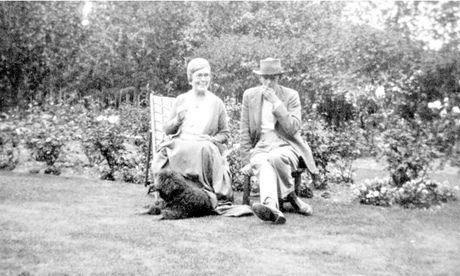
A hundred years ago, Gerald Duckworth’s publishing company brought out a little book by an unknown writer about a student teacher in Germany. It was called Pointed Roofs, and its author was Dorothy M Richardson.
The story was narrated entirely through the consciousness of the heroine, Miriam Henderson, and readers and critics alike were both bewildered and excited. A reviewer in the Manchester Guardian, for example, although sure that the novel was “almost startlingly original”, could not pin down why, concluding rather helplessly: “It is a novel that no sensitive reader will forget. Its charm cannot be communicated.”
The novel was the first of a series called Pilgrimage, a gigantic 13-volume semi-autobiographical narrative that became a byword for introspective modernist experimentation. It was the first novel to be labelled “stream of consciousness”, in a review by May Sinclair – a phrase that had been popular with psychologists for some time but hadn’t yet been applied to literature. Richardson hated the phrase, saying that “amongst the company of useful labels devised to meet the exigencies of literary criticism it stands alone, isolated by its perfect imbecility”. Unfortunately for Richardson, however, the phrase stuck. The stream of consciousness novel acquired genre status.
Other modernist writers found their work lumped in with Richardson’s. Virginia Woolf’s Mrs Dalloway, for example, was reviewed as extending “the method of Miss Dorothy Richardson”; and by the late 1920s four names were invariably linked: James Joyce, Woolf, Marcel Proust and Richardson. All, readers were told (again in the Guardian, in 1930), were “explorers of a province of consciousness”. DH Lawrence, among others, found this self-absorption easy to mock: “‘Did I feel a twinge in my little toe, or didn’t I?’ asks every character in Mr Joyce or Miss Richardson or Monsieur Proust.”
Unlike her more famous contemporaries, Richardson was, all her life, desperately poor. Her father became bankrupt when she was only 17, and she left home and took up the post of student teacher at a school in Hanover, an experience she later describes in Pointed Roofs. Richardson’s subsequent experiences are also charted in Pilgrimage: Dorothy-Miriam teaches at a school in north London, then as a governess in a private house, and then becomes a dental secretary on Harley Street. She meets socialists and anarchists and Zionist Russian Jews and suffragettes. She attends lectures and learns how to ride a bicycle. She has affairs with married men and with women; she almost becomes a Quaker but then becomes a writer instead. At no point in all these adventures does she have any money. She lives on her bread roll and cup of coffee in an ABC cafe, and the lunch her dentist employers provide as a perk of the job. Her novels are not only remarkable works of modernist experimentation, they are a slice of history: the real struggles and the real joys of a solitary female worker in turn-of-the-century London.
The post-Pilgrimage Richardson was no better off. She divided her time between off-season Cornwall and off-season London, and she supplemented the tiny income she gained from her novels with translations and articles. Her fiction suffered.
In 1934, Richardson’s friend SS Koteliansky wrote to her and asked what would persuade her to change publishers. Duckworth, he claimed, wasn’t doing enough to promote the successive volumes of Pilgrimage. Richardson replied that what she really wanted, what would really get her lifework the attention she felt it merited, was a collected edition. Kot took her at her word, and got her a contract with Dent & Cresset. The collected Pilgrimage was published in 1938; Virago Press republished this version in the 1970s, as part of their commitment to the rediscovery of neglected female writers. Now, a project is underway to publish Pilgrimage again, in a scholarly edition with Oxford University Press. Today a blue plaque is to be unveiled at Woburn Walk in Bloomsbury, where she lived, opposite Yeats, in 1905 and 1906. People are starting to read her once more, again reasserting her place in the canon of experimental modernist prose writers.

